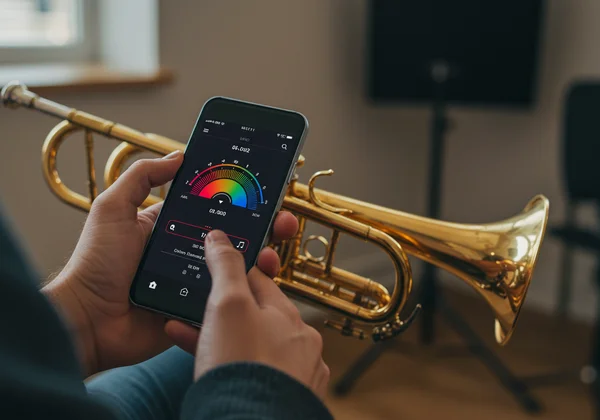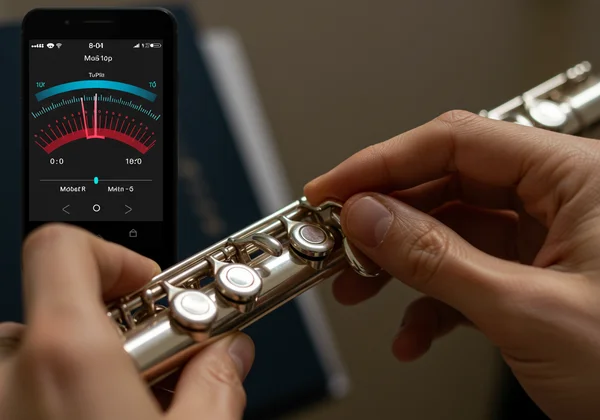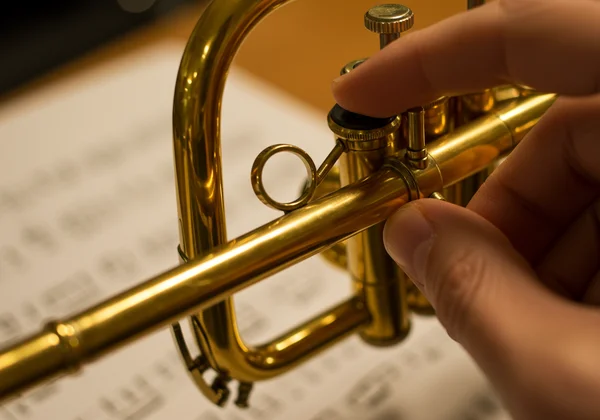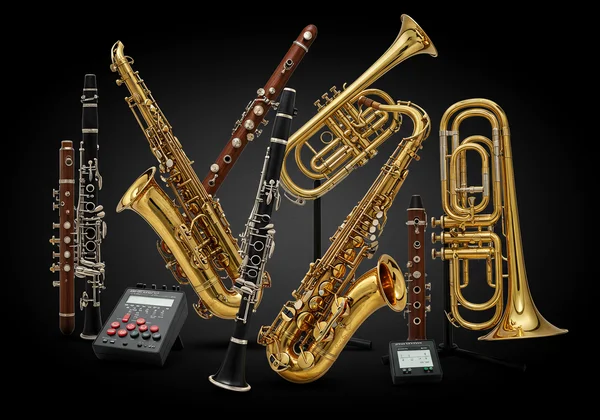Chromatic Tuner: Wind & Brass Instrument Tuning Guide Online
Let's be honest, mastering the nuances of tuning wind and brass instruments can feel like a significant challenge. Unlike a guitar with simple tuning pegs, your pitch is a delicate dance between your embouchure, air support, and the instrument's mechanical slides. For both beginners and seasoned players, achieving perfect pitch requires a reliable tool. So, how to use a chromatic tuner for wind instruments like flute or trumpet? This guide shows how our free online chromatic tuner offers a precise solution for any wind or brass instrument, helping you achieve perfect pitch.
Tuning should be effortless. Our browser-based tool provides instant, accurate readings without downloads or fees. Ready to play in perfect harmony? You can try our free tool right now.

Understanding Wind & Brass Instrument Tuning Challenges
For wind and brass players, accurate intonation is a dynamic process. The instrument is an extension of your body; your breath, lip tension, and even the ambient temperature play a crucial role in the pitch you produce. This differs from string instruments, where tuning is more static. Our goal is to demystify this process, making brass instrument tuning and woodwind tuning a clear and manageable part of your routine.
The Unique Acoustics of Wind and Brass Instruments
Every wind and brass instrument operates on a simple principle: vibrating a column of air. The length and shape of that air column determine the fundamental pitch. When you press a valve on a trumpet or a key on a clarinet, you are changing the effective length of the tube. Understanding these instrument acoustics shows why small adjustments demand a sensitive tuner for accurate feedback.
Embouchure, Air Support, and Tuning Slide Basics
Before you even touch a tuning slide, your body is the primary tuning mechanism. A strong, consistent airstream provides a stable pitch, while your embouchure—the way you shape your lips and facial muscles—makes fine adjustments. A tired embouchure can cause your pitch to go flat. For major adjustments, you rely on the instrument's mechanics. The main embouchure adjustment happens with your body, but the physical tuning slide on a trumpet or the headjoint on a flute provides the baseline pitch your body works from.
Flute Tuning Online: A Step-by-Step Guide
The flute's brilliant and clear tone is unforgiving when out of tune. Using a flute tuner online provides the immediate visual feedback needed for precise adjustments. Flutes are sensitive to temperature, so always warm up by playing for a few minutes before tuning. This ensures the metal has expanded to its playing condition for a stable pitch.
Calibrating Your Flute with a Digital Tuner
The standard orchestral tuning note is A4 (440 Hz). Your goal is to match this pitch perfectly. After warming up your instrument, navigate to the online instrument tuner and allow microphone access. Play a steady A4. The tuner will instantly show you if you are sharp (too high) or flat (too low). Calibrating flute pitch is the crucial first step to sounding great with other musicians.
Adjusting Your Flute's Headjoint for Perfect Pitch
The primary mechanism for tuning a flute is the headjoint. If the online tuner indicates your note is sharp, gently pull the headjoint out from the body of the flute. This slightly lengthens the air column, lowering the pitch. If your note is flat, push the headjoint in. Make tiny adjustments—even a millimeter can make a difference. Play the note again after each adjustment until the tuner indicates you are perfectly in tune. This simple process of headjoint adjustment will become second nature.

Trumpet Tuning Guide: Achieving Perfect Pitch
For brass players, this trumpet tuning guide is essential. The trumpet has a main tuning slide for overall pitch and smaller valve slides for fine-tuning specific notes. A common reference note is concert B-flat. Always warm up your trumpet before tuning to ensure a stable temperature.
Utilizing Your Trumpet's Main and Valve Slides Effectively
Start by tuning your concert B-flat (the open C on a B-flat trumpet) using the main tuning slide. Play the note steadily into your microphone. If our microphone tuner shows you're sharp, extend the main tuning slide. If you're flat, push it in. Once your open notes are in tune, check notes that use valves. The first and third valve slides can be adjusted to correct the intonation of notes that use those specific valve combinations, giving you precise control over your entire range.
Common Trumpet Pitch Tendencies and How to Compensate
Experienced players know that certain notes on the trumpet naturally have pitch tendencies. For example, the low D and C-sharp are often inherently sharp. To correct this, players extend the third valve slide while playing those notes. An accurate online tuner is invaluable for identifying your instrument's unique tendencies. By regularly using this online tuner, you can learn these nuances and train your ear and hands to make real-time adjustments, turning good playing into great playing.

Tuning Other Wind & Brass Instruments with Your Chromatic Tuner
The beauty of a chromatic tuner for winds is its versatility. It detects any of the 12 chromatic pitches, making it a universal tool for any musician. Whether you play clarinet, saxophone, trombone, or tuba, the principles are the same. Our tool provides precision for the entire ensemble.
Clarinet Tuning Tips and Barrel Adjustments
A clarinetist's main tuning points are the barrel and the center joint. Similar to a flute's headjoint, pulling the barrel out from the upper joint will flatten the pitch. For larger adjustments, you can also pull out slightly at the middle tenon. Clarinets are particularly sensitive to temperature changes, so frequent checks with an online tuner during practice are wise. Small barrel adjustments can keep you sounding perfect.
Saxophone Pitch Control and Mouthpiece Adjustments
For saxophonists, the primary point of tuning is the mouthpiece on the neck cork. To sharpen the pitch, gently push the mouthpiece further onto the cork. To flatten the pitch, pull it out. This is a sensitive adjustment, so move it in very small increments. Using our free online tuner provides the instant feedback you need to find the sweet spot. Consistent mouthpiece adjustments are key to maintaining solid intonation throughout your saxophone's range.

Optimizing Your Online Chromatic Tuner Experience
Our mission is to provide a powerful, free, and user-friendly online tuner. To get the most from our online chromatic tuner, follow a few best practices for fast, accurate readings. This lets you tune with confidence and focus on your music.
How to Get Accurate Readings from Your Microphone Tuner
The quality of your tuning depends on the sound input. For best results, use our microphone tuner in a quiet environment to minimize background noise. Position your device's microphone relatively close to the bell of your brass instrument or the sound source of your woodwind. Play a single, sustained note with good breath support. A steady, clear tone will give the tuner the best information to analyze, resulting in a precise reading.
Maximizing Precision with Our Interface and Settings
Our interface is designed for clarity. The needle display gives you immediate visual feedback, showing the note you are playing and how close it is to the target pitch. When the needle is centered and the display turns green, you are perfectly in tune. As a digital tuner, it leverages sophisticated algorithms to detect pitch with professional-grade accuracy. Explore the interface and see how quickly you can tune any instrument with ease.
Master Your Pitch: Confident Tuning for Wind & Brass
Tuning a wind or brass instrument is a skill blending art and science. It requires listening, feeling, and adjusting. A reliable tuner is your partner, providing objective feedback to hone your intonation. Our online chromatic tuner is designed to be that partner—always available, completely free, and incredibly accurate.
By incorporating our online chromatic tuner into your daily practice, you build the confidence that comes from knowing you are playing perfectly in tune. Stop struggling with expensive hardware or clunky apps. Embrace the simplicity and precision of a browser-based tool. Visit Tuner.wiki today, tune with confidence, and play with passion.
Frequently Asked Questions About Tuning Wind & Brass Instruments
How to use a chromatic tuner for wind instruments like flute or trumpet?
Tuning with an online chromatic tuner is straightforward. Start by opening our online tuner in your browser and allowing microphone access. Then, play a steady, single note on your instrument. The tuner will display the note and indicate if it is sharp (too high), flat (too low), or in tune. Based on this feedback, make small adjustments to your instrument—like moving a tuning slide or headjoint—and repeat the process until the tuner shows the note is perfectly centered.
Is an online tuner accurate for brass and wind instruments?
Absolutely. Modern web technologies and device microphones make online tuners like ours exceptionally accurate. Our high-precision algorithm offers reliability comparable to physical tuners. For optimal results, always tune in a quiet environment.
Can I tune my wind instrument with a phone?
Yes! This online tuner is a browser-based tool, meaning it works on any device with a modern web browser and a microphone, including smartphones, tablets, and laptops. There's no need to download an app. Simply open the website on your phone's browser for instant access to a powerful tuning tool, perfect for practice, lessons, or backstage warm-ups. You can tune with a phone anywhere, anytime.
What are common pitch tendencies and standard tuning for wind instruments?
Most concert band instruments tune to a concert B-flat, while orchestral instruments often use a concert A (A440). Pitch tendencies refer to notes on an instrument that are naturally slightly sharp or flat due to its acoustic design. For example, a trumpeter might need to extend the third valve slide for low D. Using a chromatic tuner helps you identify these tendencies on your specific instrument so you can learn to compensate and play with perfect intonation.